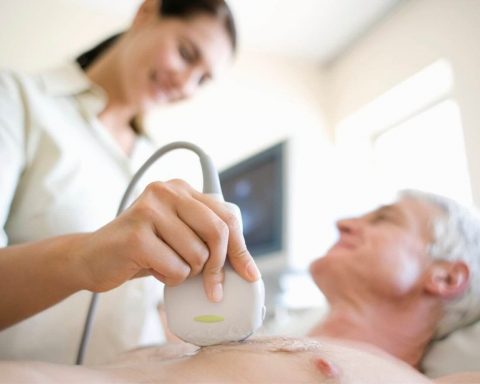Mobility is often taken for granted, but it becomes increasingly important to our quality of life as we age. Mobility issues can lead to reduced independence, social isolation, and a decline in physical and mental health.
For senior citizens, mobility devices like scooters can be game-changers. Not only do they facilitate easy movement within and outside the home, but they also offer the freedom to participate in activities that bring joy and meaning. From attending family gatherings to going grocery shopping, scooters can empower seniors to maintain a semblance of their old lives, fostering both physical and emotional well-being.
With that in mind, are there Medicare-approved scooters that senior citizens can purchase with their coverage? Let’s explore.
Medicare-Approved Scooters: What Are They?
Medicare-approved scooters are power-operated vehicles designed to assist individuals who have difficulty with mobility. These scooters fall under the category of Durable Medical Equipment (DME) as defined by Medicare Part B. People with a recognized medical necessity for scooters use them both within the home and outside.
The benefits of using a Medicare-approved scooter are multifold. For starters, they enable seniors to regain independence and autonomy in their daily lives, which can be a significant boost to mental health. These scooters are designed to be easy to operate, offering a safe mode of transportation around the home and in the community.
While Medicare does cover scooters, it also includes coverage for other mobility aids like wheelchairs when scooters are not suitable, ensuring that all beneficiaries receive the appropriate mobility support in alignment with their specific medical requirements and living conditions.
Eligibility for Medicare-Approved Scooters
To qualify for a Medicare-approved scooter, you must meet specific criteria:
- Your doctor must submit an order stating your medical need for a scooter or wheelchair.
- You must have a health condition that causes significant difficulty in moving around your home.
- Activities of daily living such as getting out of bed or bathing should be difficult even with the help of a cane or walker.
- You or someone else must always be available to assist in safely operating the scooter.
- The layout of your home should accommodate the mobility device.
A face-to-face examination with your doctor is essential to establish the medical necessity of a scooter. You will need a doctor’s prescription, which should be no more than 45 days old, detailing your medical condition and stating that you can safely operate the device.
Medicare Part B vs. Medicare Advantage Coverage for Scooters
Under Medicare Part B, you must pay 20% of the Medicare-approved amount after fulfilling your Part B deductible for the year, which stands at $226 in 2023. Medicare covers the remaining 80%. Your out-of-pocket costs may vary if you’re enrolled in a Medicare Advantage or Part C plan. Contact your plan for specifics on costs and supplier options.
In some cases, you may need pre-approval or prior authorization for certain types of scooters. In such cases, your equipment supplier should handle the required documentation for Medicare.
How to Obtain a Medicare-Approved Scooter
Once you’ve established your eligibility for a Medicare-approved scooter, the next question is how to acquire one. The process involves a series of steps that range from choosing a supplier to gathering the necessary paperwork. Here are the steps you need to take:
- Consult your physician: The first step is to consult your doctor about your mobility issues and discuss whether a scooter is a suitable solution. Your doctor will have to provide a written prescription that you can then take to a Medicare-approved supplier.
- Face-to-face examination: Medicare requires that you have a face-to-face examination to discuss your needs and options. Your medical records should reflect this examination.
- Choose a supplier: You’ll need to find a supplier who accepts Medicare.
- Submit the paperwork: Once you’ve chosen a supplier, you’ll need to provide them with your doctor’s prescription and any other required paperwork.
- Prior authorization: Check if the scooter model you’ve chosen requires prior authorization. If so, your supplier will submit the necessary paperwork for approval.
- Finalize payment: After the authorization and paperwork are in order, you’ll be responsible for paying 20% of the cost (after the Part B deductible), unless you have additional coverage that might cover these costs.
- Delivery: Once you receive approval and make the payment, the supplier will deliver the scooter to your residence.
Medicare Coverage and Costs
Understanding Medicare’s financial involvement in your acquisition of a scooter is crucial. While Medicare covers a substantial portion of the costs, you’re still responsible for meeting certain financial obligations, such as deductibles and out-of-pocket expenses. Here’s how it breaks down:
- Medicare Part B: This part of Medicare covers 80% of the Medicare-approved amount for your scooter once you have met the Part B deductible. This means you are responsible for the remaining 20%.
- Medicare Advantage: If you’re enrolled in a Medicare Advantage Plan, the percentage covered may vary. Check with your plan for specifics.
- Coverage limitations: Medicare may only cover the most basic model of scooter that meets your medical needs. Any upgrades or additional features will likely be out-of-pocket expenses.
Potential Out-of-Pocket Costs
Now, let’s discuss other costs that may affect your wallet and that Medicare may not cover:
- Deductible: Before Medicare’s 80% coverage kicks in, you’ll have to meet your Part B deductible.
- 20% copayment: After the deductible, you’ll have to cover the remaining 20% of the Medicare-approved amount for the scooter.
- Additional features: If you opt for a scooter with more features than what Medicare covers, you will have to pay for those extras yourself.
- Service and maintenance: Over time, your scooter may need repairs or maintenance that are not covered by Medicare, resulting in additional costs.
Reach out to CoverRight for further information about scooter coverage under Medicare. We’re your trusted partner for customized Medicare solutions from eligibility to enrollment.
Frequently Asked Questions
How often can I get a new scooter?
Check with Medicare or your provider for details related to your specific circumstances. They typically approve a new scooter when repairs to your existing one are no longer cost-effective and your medical condition still necessitates it.
Can I upgrade my scooter?
You may be able to upgrade your scooter, but it’s important to know that Medicare usually only covers the most basic model that meets your medical needs. You will likely have to pay out-of-pocket for any additional features or upgrades.
What if I need repairs or maintenance?
If the scooter is medically necessary and the repairs are deemed reasonable, Medicare may cover the repairs or replacement parts. Otherwise, you are responsible for maintenance costs. Always consult your supplier and Medicare policy for the most accurate information.
How do I appeal a denied claim?
If Medicare denies your claim for a scooter, you have the right to appeal. The first step is to review the denial letter carefully and follow the instructions provided. You’ll likely need to gather additional documentation and possibly consult your physician for further evidence of medical necessity.










